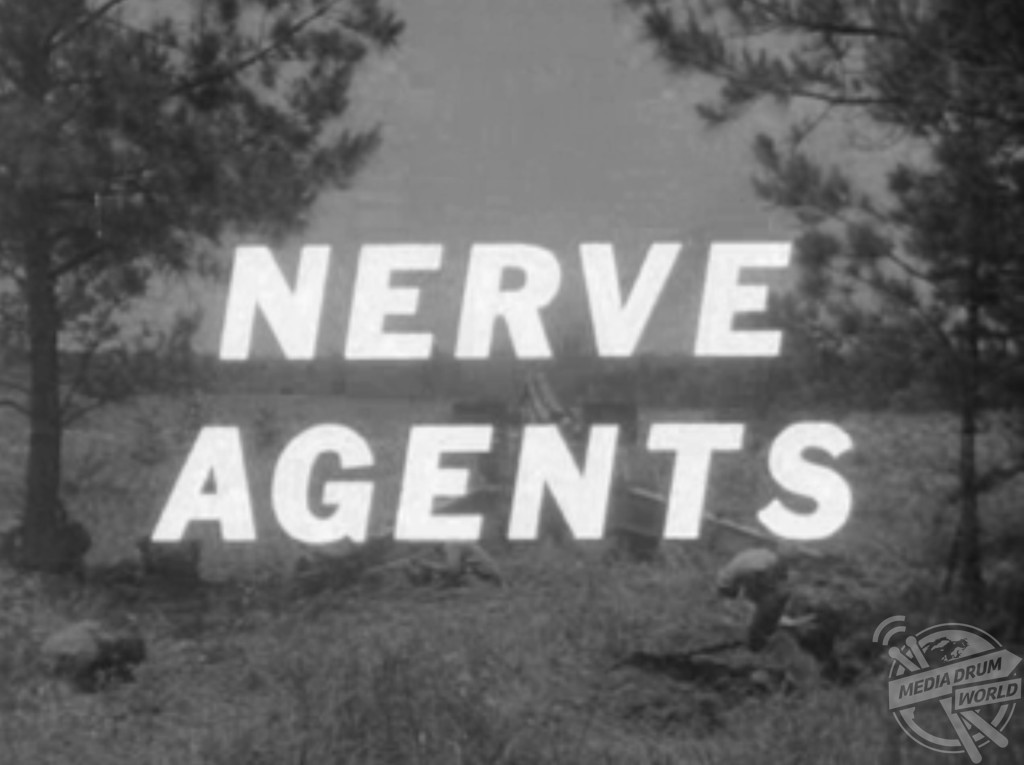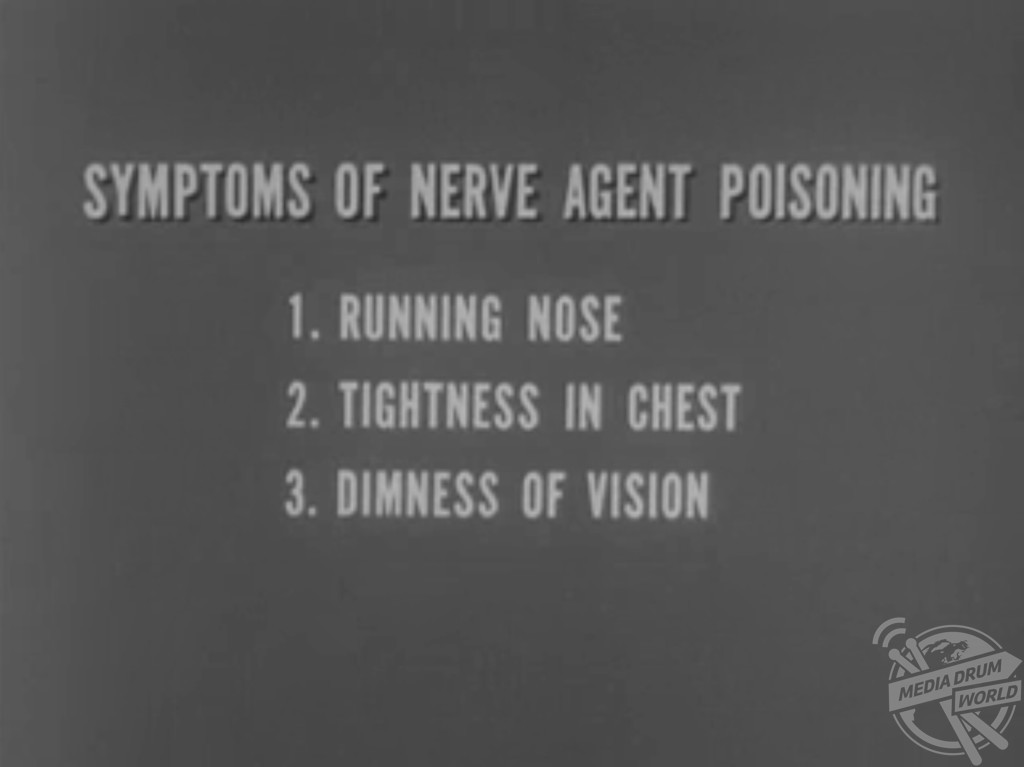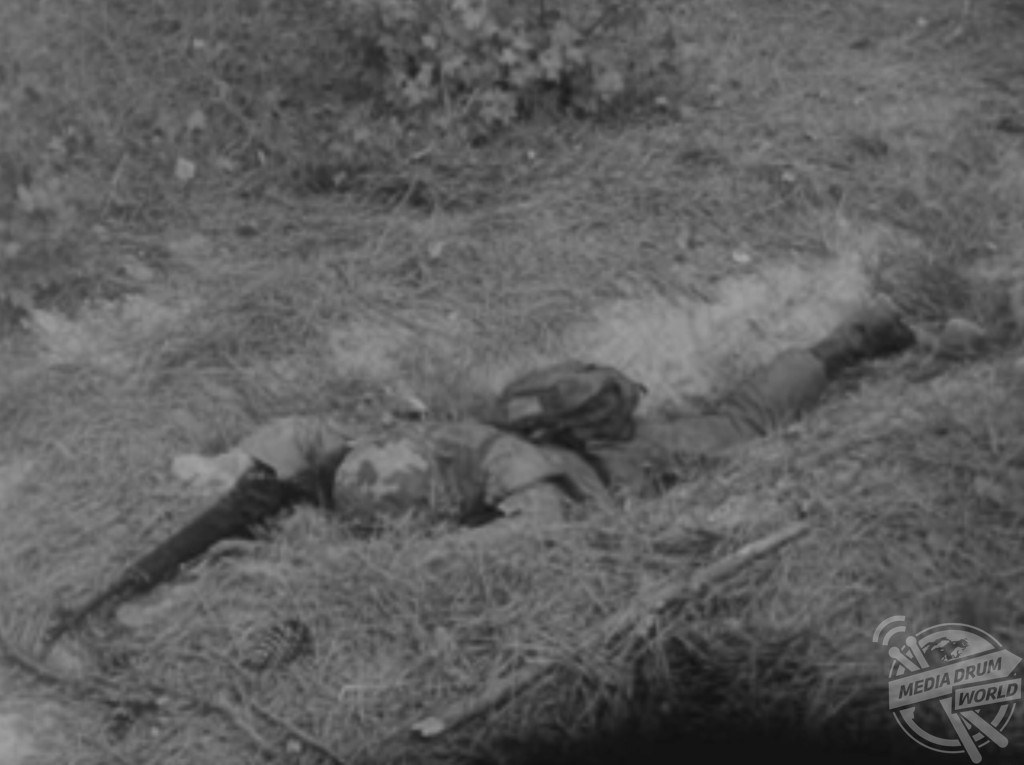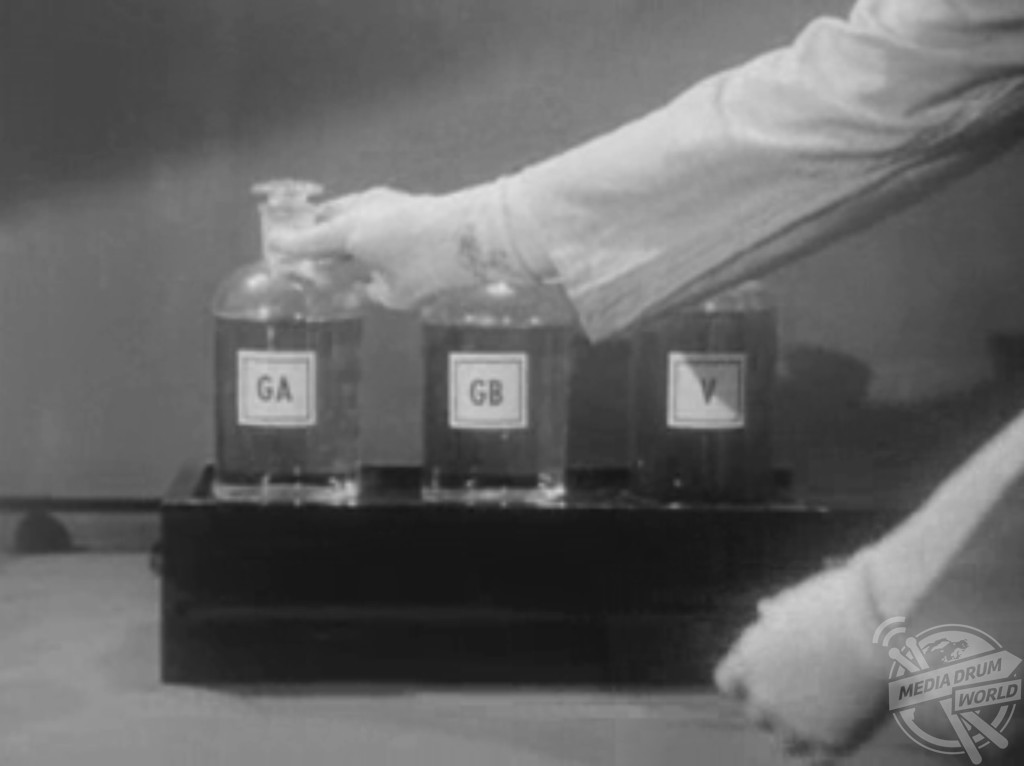By Tom Dare
A HARROWING VIDEO from the Cold War explaining how different types of nerve agents affect the human body has resurfaced this week, as the row between Britain and Russia over the alleged poisoning of ex-Soviet spy Sergei Skripal in Salisbury on Sunday afternoon continues to intensify.

Footage from the video, put together by the American armed forces during the early years of the Cold War as an informative film for its recruits, explains the nine symptoms that could result from contact with a nerve agent, including dimness in vision, difficulty breathing and twitching, jerking and staggering.
Further clips from the film go on to explain what was known about the three different types of nerve agent available at the time, namely GA, GB and V, before showing a mock-up of a soldier being exposed to the deadly chemicals.

Nerve agents are defined as a toxic, usually odourless organophosphate that is used as a chemical weapon in gaseous or liquid form, disrupts the transmission of nerve impulses, and may cause breathing difficulties, coughing, vomiting, muscle weakness or paralysis, convulsions, coma, and death.
They were first developed in 1936 by German scientists attempting to invent a new insecticide to use on crops. Inadvertently stumbling across the G series of nerve agents (so named after the country in which they were discovered), scientists went on to produce tabun (GA), sarin (GB), and soman (GD) during the war, while cyclosarin (GF) was developed slightly later, in 1949. Though they had the capability to and had produced thousands of tonnes of chemical weapons by the end of the war, the Nazis opted not to use this option even as it became evident they were going to lose the war.

The V series of nerve agents, some of which are said to be four times as harmful as the G series, were first discovered by British scientists in 1954 at Porton Down. Featuring both the VX and VR agents, this particular series of nerve agents was notable for its ‘persistent’ qualities, meaning it was far more difficult to clean or wash away than the G series, reportedly having an ‘oily’ consistency.
The last nerve agent to be discovered in recent times is known as Novichok and is thought to have been used in the attack on Sergei Skripal and his daughter on Sunday. Developed in the USSR between 1960 and 1990, the idea behind Novichok was to develop a nerve agent unknown to the west, one which could not be easily detected by standard chemical weapons tests. Theresa May has said that, since it was the substance used, either Russia is responsible for the attack or that they have lost control of the substance.

“Mr Speaker, this morning I chaired a meeting of the National Security Council in which we considered the information so far available. As is normal, the Council was updated on the assessment and intelligence picture, as well as the state of the investigation,” said Mrs May.
“It is now clear that Mr Skripal and his daughter were poisoned with a military-grade nerve agent of a type developed by Russia.
“This is part of a group of nerve agents known as ‘Novichok’.

“Based on the positive identification of this chemical agent by world-leading experts at the Defence Science and Technology Laboratory at Porton Down; our knowledge that Russia has previously produced this agent and would still be capable of doing so; Russia’s record of conducting state-sponsored assassinations; and our assessment that Russia views some defectors as legitimate targets for assassinations; the Government has concluded that it is highly likely that Russia was responsible for the act against Sergei and Yulia Skripal.
“Mr Speaker, there are therefore only two plausible explanations for what happened in Salisbury on the 4th of March.

“Either this was a direct act by the Russian State against our country.
“Or the Russian government lost control of this potentially catastrophically damaging nerve agent and allowed it to get into the hands of others.”






